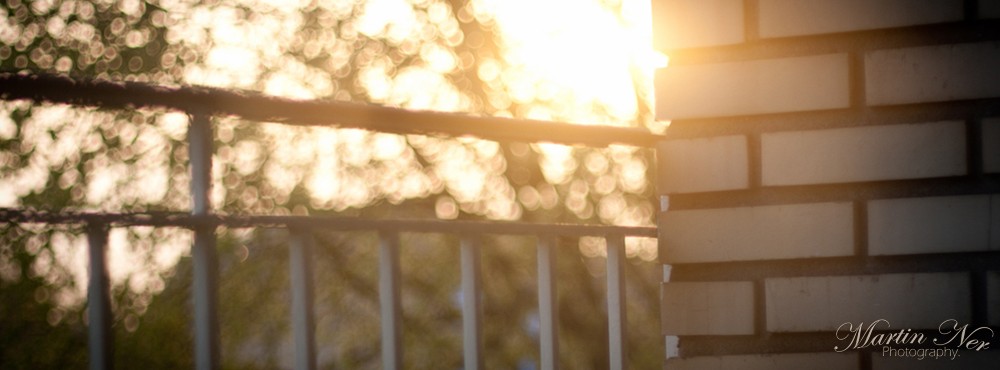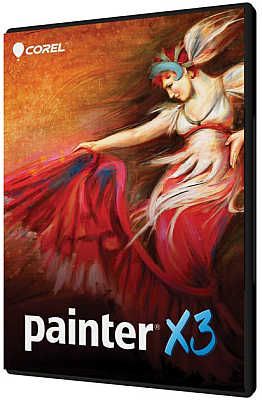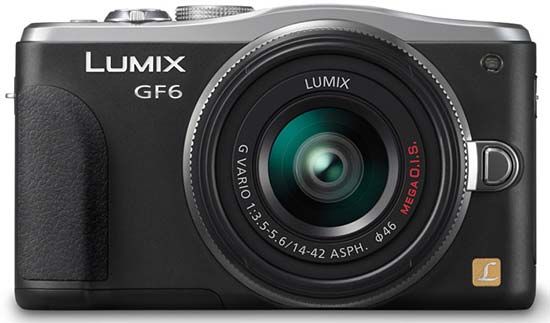
The Panasonic Lumix GF6 is a new small, stylish and cutting-edge compact system camera. The GF6 features a Four Thirds-sized 16 megapixel Live MOS image sensor, Venus Engine processor (the same as that of the range-topping GH3), Light Speed AF system, a hinged touch-sensitive LCD screen which can be rotated by 180°, built-in pop-up flash, integrated Wi-Fi and NFC connectivity, Full HD video recording, 19 Creative Effects and a Creative Panorama mode, stop-motion animations, a Clear Retouch function that allows users to clone out unwanted elements from a photo in-camera, RAW support and an expanded ISO range of 160-25600. The Panasonic GF6 is available in black/silver or white in a kit with the standard Lumix G Vario 14-42mm F3.5-5.6 lens for £499 / $599, and £649 in a double-zoom kit with the 45-150mm Mega O.I.S. telephoto lens.
Ease of Use
The Panasonic Lumix GF6 is very similar in outward appearance to the previous GF5 model that it replaces. It’s just a little bit larger at 111.2 x 64.8 x 38.4 mm and heavier at 280g without a lens attached or battery inserted. With a pancake lens like Panasonic’s own 14mm f/2.5 optic fitted, the GF6 is about the same size as a typical fixed-lens compact camera, even though it boasts a much bigger sensor. The GF6 actually ships as standard with the Lumix G Vario 14-42mm F3.5-5.6 lens, which is still small but stops the camera from being pocketable.
The main changes versus the previous GF5 include a less bulbous flash housing, addition of a shooting mode dial on top, the 180 degree tilting screen, and a second Function / Wi-Fi button on the rear. Otherwise the GF6 is very similar to its predecessor. The built-in Wi-Fi functionaility (IEEE 802.11 b/g/n) lets you use your smartphone or mobile device to remotely change the camera settings (focus setting, exposure compensation, ISO, WB and Photo Styles) using the LUMIX App. You can even fire the shutter button remotely, while the auto transfer function automatically backs up your photos onto a tablet, smartphone, PC, web service, AV device or Panasonic’s LUMIX Club Cloud Sync service. The GF6 is also one of the first compact system cameras to feature NFC (Near Field Communication) technology (the same technology that’s used for mobile payments), which allows you to connect it to a compatible internet enabled device or another NFC-enabled camera by simply tapping them together.
The mechanical button on the top/rear for the GF6’s pop-up flash has been retained, with all the top-mounted controls – including the shutter release, one-touch movie record button, power switch and dedicated intelligent Auto button – grouped tightly together on the right-hand side of the top-plate. There are dual holes on the left of the top-plate for the stereo mic, alongside the built-in speaker.
The GF6 has a rather small but tactile textured vertical area on the front-right of the body which acts as a handgrip, allowing you to hold the camera with two fingers whilst operating the shutter button with your forefinger. This works in tandem with the slim rubberized thumb-rest on the rear. The GF6 sports a design characterised by clean lines, gentle curves and a polished exterior and is extremely well-built despite its entry-level price-point, with a high quality aluminum body, lens mount, and tripod socket, although most of the buttons are made from plastic, as is the mount on the kit lens.
Just like the GF1, GF2, GF3 and GF5 before it, the GF6 doesn’t have a built-in viewfinder, with just the LCD screen on the rear providing a solution for composing your images. A more important consideration is the GF6’s complete lack of an external hotshoe, which prevents the use of an optical viewfinder accessory. This inability to hold the camera up to your eye makes it very difficult to hand-hold the camera to compose using the LCD screen and still get sharp results using longer focal lengths. As the ability to use different lenses is one of the main selling points of a system camera, the lack of any eye-level finder, optical or electronic, is rather limiting.
The Micro Four Thirds system is now very well-established, with a wide variety of lenses on offer from Panasonic and Olympus that cover most of the popular focal lengths. You can also use regular Four Thirds lenses or even Leica D lenses via optional adapters from either Panasonic or third-parties, but lenses that are not compatible with the GF6’s Contrast AF function can only be used with manual focusing and cannot use the Tracking AF, AFc (Auto Focus Continuous) or Continuous AF functions.
Optical image stabilisation on all Pansonic compact system cameras is supplied via the lens, rather than being built-in to the camera body, a key difference between the Panasonic and Olympus systems. Note that the 14-42mm kit lens does offer image stabilisation, but it’s turned on and off via main menu system rather than a physical switch on the lens barrel, with three different modes accessible through the GF6’s menu system.
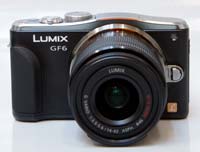
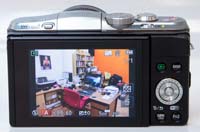
When enabled, the Panasonic Lumix GF6 automatically compensates for camera shake, which is a slight blurring of the image that typically occurs at slow shutter speeds when the camera is hand held. There are three different modes, Mode 1 is on all the time including image composition, Mode 2 is only on when you press the shutter button, and Mode 3 compensates for up and down movements only (which in turn allows you to pan the camera).
On the front of the Panasonic Lumix GF6 is a small focus-assist and self-timer indicator lamp, lens release button, lens mount and the already mentioned hand-grip. On the bottom is a metal tripod socket, importantly in-line with the middle of the lens barrel, and the shared battery compartment and SD/SDHC/SDXC memory card slot. The GF6 manages just over 325 shots using the supplied DMW-BLE10E 7.2V 1025mAh rechargeable Li-ion battery.
On the right-hand side are ports for the HDMI and AV Out/Digital connections, with protruding metal eyelets on either side of the body for the supplied camera strap. Unfortunately, Panasonic don’t include a HDMI cable as standard in the box, which means that you’ll have to purchase one separately to take advantage of this camera’s HD connectivity. On the left of the camera is the NFC logo.
The top of the GF6 has a microphone, stereo speakers, cleverly designed built-in pop-up flash, dedicated button for the Intelligent Auto mode which lights blue when turned on, tactile shutter button, on/off switch, and a one-touch movie button. The Panasonic GF6 has a dedicated button for opening the cleverly designed pop-up flash on the rear. Given the small size of the GF6, fitting a built-in flash was no mean feat, as proven by the double-hinged design which is quite a technical achievement. Although not particularly powerful with a guide number of just 6.3, the GF6’s flash is perfectly adequate for fill-in effects at close-quarters.
New to the GF6 is a dedicated shooting mode dial, something that we missed having on the previous model. The usual selection of Program, Aperture Priority, Shutter Priority, and Manual are available for the more experienced photographers. An optional exposure meter can be displayed in the P/A/S/M shooting modes which graphically shows the relationship between shutter speed and aperture, with a color-coded warning that alerts users when the settings are not in the proper range. The more beginner-friendly Scene modes (over 20 available, all with fairly helpful on-screen explanations) and Intelligent Auto are also accessed via the shooting mode dial. One scene mode particularly worthy of mention is the Peripheral Defocus option, which makes it easy for beginners to achieve a blurred background / sharp subject effect without having to understand what apertures are. Additionally there are two Custom modes which allow you to configure your favourite camera settings and quickly access them.
The GF6’s range of Creative Controls, denoted by an artist’s palette, has been further expanded from 14 options to 19 on the GF6 – you can see examples on the Image Quality page. You can also fine-tune each effect via a series of simple on-screen sliders for color, saturation and contrast, complete with a real-time preview of your changes. The camera even provides filter recommendations and on-screen scene guides.
Accessed via the dedicated red iA button on top of the camera, Intelligent Auto mode tries to make things as easy as possible for the complete beginner. It allows you to point and shoot the camera without having to worry about choosing the right scene mode or settings. Intelligent Auto Mode automatically determines a number of key criteria when taking a picture, including selecting the most appropriate scene mode (from 5 commonly used presets) and ISO speed, and turning face detection (up to 15 faces), image stabilization and quick auto-focus on.
The Intelligent Auto Plus Mode also includes Intelligent Exposure, which increases exposure only in the under-exposed areas of the image, Digital Red-eye, which automatically detects and removes red-eye, and AF Tracking, which continually tracks a moving subject and keeps it in focus, without you having to hold the shutter button halfway down as on most other cameras.
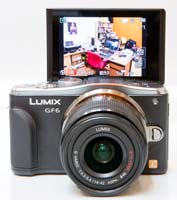
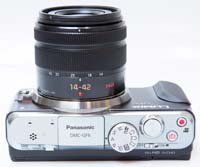
The Intelligent Resolution mode makes a standard image look like a higher resolution one by processing the contour areas, texture areas and smooth areas individually. There are three available strengths – low, standard and high – and an Extended option which increase the zoom range. Despite all the clever behind-the-scenes processing, it’s fairly easy to tell which image was taken with Intelligent Resolution turned on and which one with it turned off due to unwanted artifacts appearing, particularly if viewing onscreen at 100% magnification. While the difference isn’t quite so apparent on a print up to A3 in size, we’re not convinced enough to recommend regularly using it.
Intelligent Dynamic adjusts the exposure setting to record more detail in the highlights and shadows, with three strengths available – low, standard and high. It’s actually very effective for high-contrast scenes when the camera tends to blow-out the highlights and block-up the shadows. New to the GF6 is the HDR mode, which combines 3 frames taken at different exposures to create a single image with increased dynamic range, while the Panorama mode allows you to take panoramic images very easily by ‘sweeping’ with the camera and even apply creative effects.
The GF6 offers 1080i HD 1920 x 1080 movies and 720p HD 1280 x 720 movies at 60/50fps (NTSC/PAL) in the AVCHD (MPEG-4/H.264) format. In addition it can also record MP4 movies at 1080p HD 1920×1080, 720p 1280×720 and VGA 640×480 pixels at 30/25fps, useful as this format can currently be shared more easily. AVCHD offers almost double the recording time in HD quality, but software support is a little thin on the ground. Panasonic describe it as the best mode for playing back on a HD TV direct from the camera, with the newly-supported MP4 format best for email and playing on a computer.
There’s also a useful wind cut function which blocks out most of the noise from background wind. The thumb-operated dedicated movie button on the top makes it simple to start record video footage at whatever quality level is currently selected. The HDMI port allows you to connect the GF6 to a high-def TV set, but only if you purchase the optional HDMI mini-cable. You can extract a frame from a movie during playback and save it as a small still image.
The Panasonic GF6’s Intelligent Auto mode works for movies as well as for still photos. Simply press the iA button on top of the camera, then the Movie Record button. The Intelligent Scene Selector automatically determines the most suitable Scene mode from five options – Portrait, Scenery, Low Light and Close-up or Normal modes. Face Detection automatically detects a face in the frame and adjusts the focus, exposure, contrast, and skin complexion. Intelligent Exposure continually checks the ambient light level and adjusts the exposure setting as conditions change to prevent blown highlights and blocked shadows. The Optical Image Stabilizer helps prevent blurring from hand-shake when using a compatible lens.
You can use any zoom lens during recording with focusing set as for still images. On the negative side, you’ll find that if you choose continuous auto-focus, areas of the video will be blurred before becoming sharp again as the camera tries to refocus. On a more positive note, the the GF6 is quite fast at re-focusing (although not as fast as for still images), and having this system is much better than not being able to auto-focus at all, as with most current DSLR cameras that offer video recording. Hand-holding the GF6 during movie recording inevitably leads to obvious shake, despite the optical image stabilizer on compatible lenses, so for best results you’ll need a dedicated video tripod. One great benefit of the touch-screen control system is that Touch Auto Focusing is available in movie recording, enabling pro-level rack-like focusing simply by pointing at the subject on the LCD screen.
The new Creative Movie shooting mode, accessed via the mode dial on top of the GF6, allows you to set the shutter speed, aperture or both settings manually during recording (a Program option is also available). Changing the shutter speed is especially suitable for shooting fast-moving subjects, whilst the ability to control the aperture is convenient when there are several subjects at different distances. In practice this system works well, allowing some really creative effects, but there are a couple of drawbacks. Firstly the operating sound of the control dials is very audible in the movie, so you’ll need to edit the soundtrack later to remove it or use the new Silent Operation mode which operates the zoom, aperture, shutter speed, exposure compensation, ISO sensitivity and mic level adjustments via the touch-screen. Secondly, you can’t set the shutter speed to below 1/25th second, instantly ruling out more creative slow shutter-speed effects.
The rear of the Panasonic GF6 is dominated by the large 3 inch LCD screen. The 920K pixel, high-resolution screen coped admirably with the majority of lighting conditions, aided by an anti-reflective coating. This screen is a great improvement on cameras with the usual 230K dot resolution, even being nice to use in low-light. The LCD operates at 60fps, twice the usual speed, which helps make it relatively flicker-free. The Auto Power LCD function automatically detects the current lighting conditions and boosts the LCD backlighting by up to 40% when shooting outdoors in bright sunshine, helping to keep the screen visible, although the lack of an optical viewfinder is a hindrance on the rare occasions that the rear LCD is difficult to see.
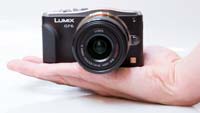
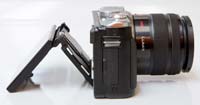
The screen now tilts through 180 degrees, which allows you to hold the camera at arms length and see yourself in the monitor, making self-portraits using the dedicated Self Shot shooting mode much easier. The hinged, tilting screen is also very useful for overhead shots and as a waist-level viewfinder for more candid shots. It doesn’t add too much extra bulk to the overall design of the GF6, and is one of the principal upgrades over the previous model.
One of the GF6’s main innovations is its touchscreen interface, with an attractive user interface that’s easy on the eye. Panasonic have wisely restricted the amount of things that you can do by interacting with the screen, and indeed you can still operate most things on the camera without having to push and prod the LCD at all. But you would be missing out on a lot of genuinely useful functionality that really improves the shooting experience.
The most immediately noticeable function is the ability to use the 1-area AF mode to focus on your main subject simply by touching it on the LCD. If the subject then moves, the GF6 cleverly follows it around the screen using the the AF tracking function. If the subject exits the frame entirely, simply recompose and tap it again to start focusing. Impressive stuff that makes focusing on off-center subjects fast and intuitive. It is a little too easy to accidentally press the screen and set the focus point to the wrong area for the current subject, but a press of the Quick Menu button will center the AF point (or you can turn this feature off altogether).
The size of the AF point itself can also be changed via an interactive onscreen slider or the rear scroll wheel. If Face Detection is enabled, the 1-area AF point can be manually set to a person’s eye to help ensure that the most important part of a portrait is in focus. If Multi-area AF rather than 1-area AF is enabled, then you can select a group of 4, 5 or 6 AF points from 9 different areas, again providing some manual control over what is traditionally a rather hit and miss affair. The Pinpoint AF auto-focus area mode allows you to touch the area of the frame where your subject is, whereupon said area gets magnified in order to allow you to set the focus point with pinpoint accuracy using a second touch. While this method is obviously slower than the others, it can be very useful when shooting, say, a portrait with shallow depth of field where you will want to make sure focus is on the subject’s eyes rather than her nose, ears or eyebrows.
When Intelligent Auto is switched on, the GF6 changes the scene mode used when you touch the subject, for example selecting portrait mode if you touch a face and macro mode if you touch a close-up flower. If you prefer to manually focus rather than use the very responsive auto-focus system, you can magnify any part of the subject by 1x, 5x or 10x by simply dragging the image around the screen. The final touchscreen ability from an image composition point of view is the ability to release the shutter, with a small icon on the right hand screen enabling this functionality, and then a single on-screen tap all that’s required to take the picture.
All of the menu options can be now changed via the touchscreen interface. You can also control image playback by touching the screen, with the ability to tap a thumbnail to see the full-size version, scroll through your images by dragging them from side to side, and magnifying them up to 16x.
To the right of the LCD screen is a simplified control layout, with a self-explanatory Playback button and a Display button at the top, which toggles detailed settings information about each picture on and off, such as the ISO rating and aperture / shutter speed. There’s also a small brightness histogram available during shooting and RGBY histogram during playback if enabled in the menu and you can also turn on guide-lines to help with composition and flashing highlights which indicate any over-exposed areas of the image.
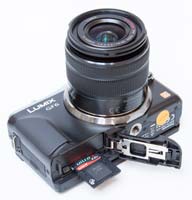
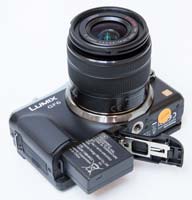
Underneath those two buttons is a traditional 4-way navigation D-Pad system with Menu/Set button in the centre. Pressing left, up, right and down on the D-Pad buttons selects AF Mode, Exposure Compensation, White Balance and Burst / Self-timer options respectively.
Underneath is a combined Q. Menu/Fn1/Delete/Reset button which provides quick access to most of the principal controls via an onscreen menu. Depending on the current shooting mode, this displays up to 13 options that can all be changed via the touch-screen. You can also configure it to include up to 10 out of 19 available settings simply by dragging and dropping the onscreen icons. You can still access all of these options from the main menu system too if you wish.
A circular scroll wheel surrounds the GF6’s D-Pad. This wheel is used for, amongst other things, changing the aperture and shutter speed by turning from left to right and back again. This is a common feature found on other high-end compacts and entry-level DSLR cameras, so you’ll be right at home if you’ve used a DSLR before – more basic compact camera users will need to get used to using this wheel.
The main menu system on the GF6 is straight-forward to use and is accessed by pressing the Menu/Set button in the middle of the navigation D-Pad. There are five main menus represented by large icons, Record, Motion Picture, Custom, Setup and Playback. As an indication of how configurable the GF6 is, the Custom menu has 29 different options, allowing you to fine-tune this camera to suit your way of working. If you have never used a digital camera before, or you’re upgrading from a more basic model, reading the easy-to-follow manual before you start is a good idea. Unfortunately Panasonic have only chosen to supply a basic guide in printed format, with the full manual only available as a PDF on the product CD.
Unlike a conventional DSLR camera which uses a phase detection auto-focus system, the GF6 employs the same Contrast AF that is commonly used by compact cameras. Panasonic have published marketing data which suggests that the GF6’s Light Speed AF system is as fast, if not faster, than a typical DSLR camera’s, with a claimed speed of just 0.09 second when used with certain lenses,. In practice we noticed very little difference in speed between the GF6 and a DSLR, and there were also very few occasions when the GF6 failed to lock onto the subject, especially when using the centre AF point. There are a wide range of AF modes on offer, including multiple-area AF with up to 23 focus areas, 1-area AF with a selectable focus area, Face Detection, AF Tracking and Pinpoint. The GF6 also has a useful Quick AF function that begins focusing as soon as you point the camera.
The start-up time from turning the Lumix GF6 on to being ready to take a photo is very impressive at less than 0.5 seconds. It takes about 1 second to store a JPEG image, allowing you to keep shooting as they are being recorded onto the memory card – there is a barely perceptible LCD blackout between each image. Storing a single RAW image takes around 4 seconds, but thankfully it doesn’t lock up the camera in any way – you can use the menu system or shoot another image while the first file is being written to memory. The Panasonic Lumix GF6 has a pretty good Burst mode which enables you to take 4.2 frames per second for an unlimited number of JPEG images at the highest image quality, or 7 RAW images. There is a much faster 20fps option, but it only records Small sized images.
Once you have captured a photo, the Panasonic Lumix GF6 has an average range of options when it comes to playing, reviewing and managing your images. You can instantly scroll through the images that you have taken, view thumbnails (up to 30 onscreen at the same time and in a Calendar view), zoom in and out up to 16x magnification, view slideshows, delete, protect, trim, resize, copy and rotate an image. You can also select favourite images, change an image’s aspect ratio, divide a video and set the print order. The new Clear Retouch function quickly and accurately removes any unwanted objects or figures in an image by just tracing over them with your fingertip.
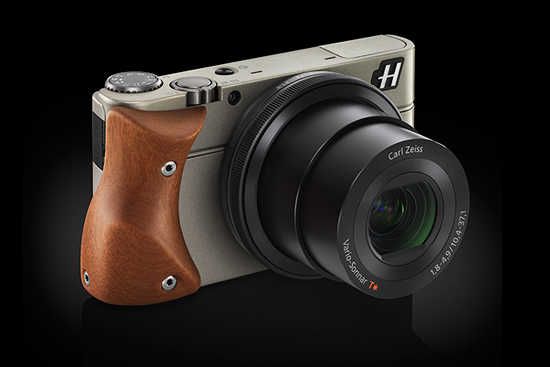 The Hasselblad Stellar is a 20-megapixel compact camera with a 28-100mm (eq.) f/1.8-4.9 Carl Zeiss Vario-Sonnar T* lens and a 1″-type sensor. Modelled on the Sony RX100, the Hasselblad Stellar retains all the headline specifications and adds a wooden grip. The company has set up a dedicated microsite for the Hasselblad Stellar, but has not officially announced its suggested retail price yet. The camera will go on sale later this month.
The Hasselblad Stellar is a 20-megapixel compact camera with a 28-100mm (eq.) f/1.8-4.9 Carl Zeiss Vario-Sonnar T* lens and a 1″-type sensor. Modelled on the Sony RX100, the Hasselblad Stellar retains all the headline specifications and adds a wooden grip. The company has set up a dedicated microsite for the Hasselblad Stellar, but has not officially announced its suggested retail price yet. The camera will go on sale later this month.